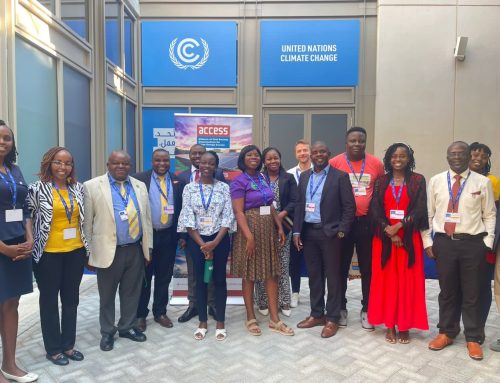By Eco Matser, Hivos
One fifth of women around the world cook on wood or charcoal stoves. This is not only bad for their health – it causes 4.3 million premature deaths per year according the World Health Organisation – but it is also the single biggest source of Green House Gas (GHG) emissions. Over the last ten years we have seen many developments, such as the massive spread of mobile phones in developing countries, so why don’t we see a change in cooking habits? Why do we still accept women cooking on firewood stoves without thinking about alternatives that match with a decade in which most people have modern mobile phones?
When you start looking into cooking you become aware of huge disparities. Ninety percent of households’ energy consumption in Africa is used for cooking. Cooking is also a major cause of climate change due to incomplete combustion (black carbon) and deforestation. You would think that many gains can be harvested when investing in clean cooking solutions. However, the main climate investment mechanism, only used 0,06 % of their annual budget for cooking solutions. Most of the money is used for large scale investment in middle income countries and not to improve the life of women and children who are the ones that use up to 8 hours a day for collecting firewood and have to sit in the toxic fumes while cooking their daily meals.
Moreover, current efforts focus almost exclusively on improved cook stoves (and biogas). Although these cookstoves – that are more efficient and do not exhaust all the fumes in the house – can improve the situation, they do not stop exposing women to smoke. Neither do they stop deforestation. We therefore urgently need to take another approach in cooking. The question is if we can use modern technologies and dropping prices of solar panels and other technologies to find a real solution for clean cooking.
Hivos and WFC commissioned a study to look beyond current practices and find possibilities to use electricity for cooking in rural and peri urban areas in Africa. In these areas people are typically not connected to electricity lines. Many speakers at conferences like the Climate Conference in Marrakesh last November highlight the fact that for these regions the quickest and cheapest solution for electrification is mini-grids and solar home panels. Hivos and World Future Council wanted to know whether this can also solve the problem of traditional and toxic cooking methods.
The report reveals that there are technological and financial challenges. The peak demand for energy during the morning and evening when all families need to cook require better performance of batteries. Costs are also higher as long as firewood is seen as “free” – collecting firewood is not monetized – and external effect as health and climate change are not taken into account.
In our view this is not to be accepted. More than 0,06% of climate finance should be used to change this. More attention is needed for the externalities to save the climate and ensure health for women and children. We think the first step is a change in mind set. Whenever we see someone cooking on a firewood stove we should perceive that as unacceptable. We have to envision clean cooking for all with technologies from this century. Just as how we envisioned mobile connectivity for all. The report shows that it is possible. Costs are not exceptional and prices actually competitive.
Find the full report on our resources page.





Leave A Comment